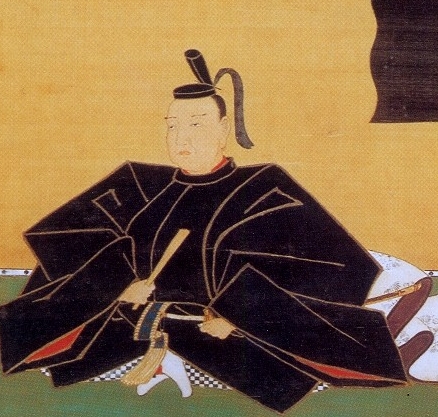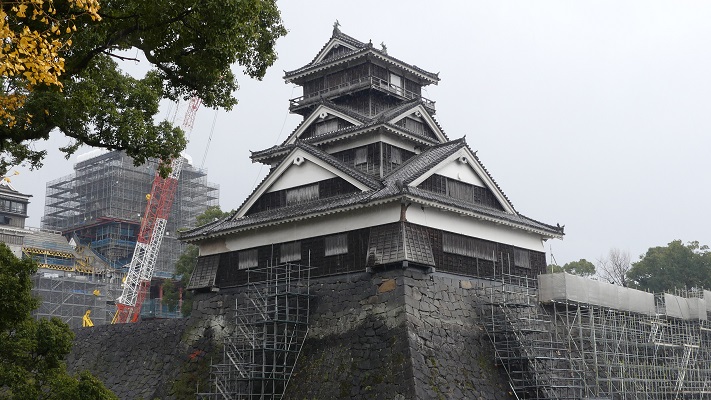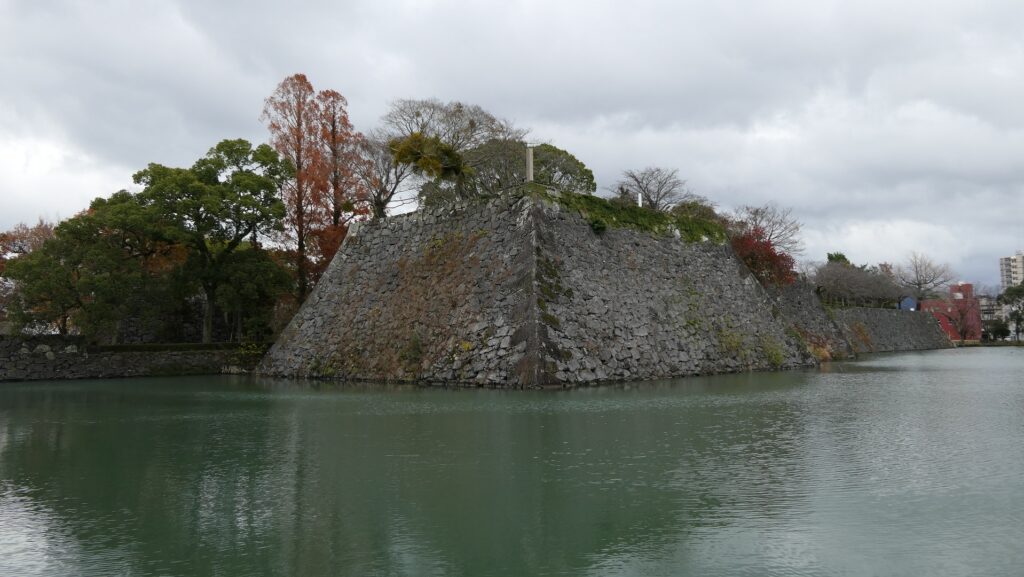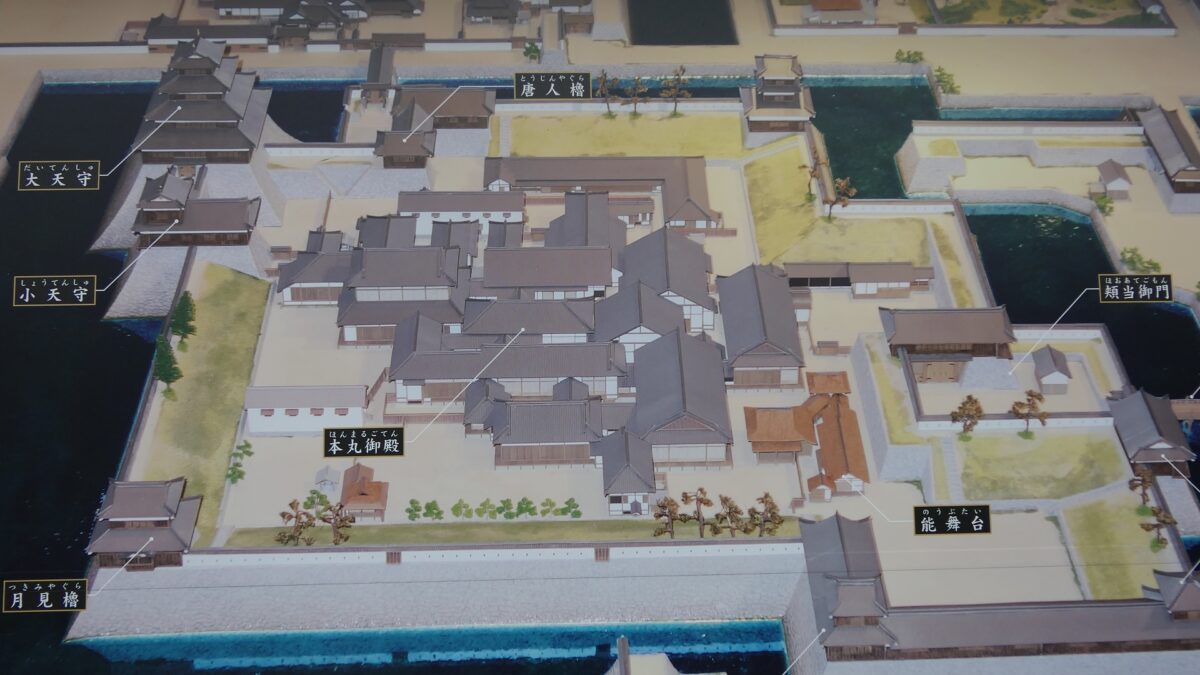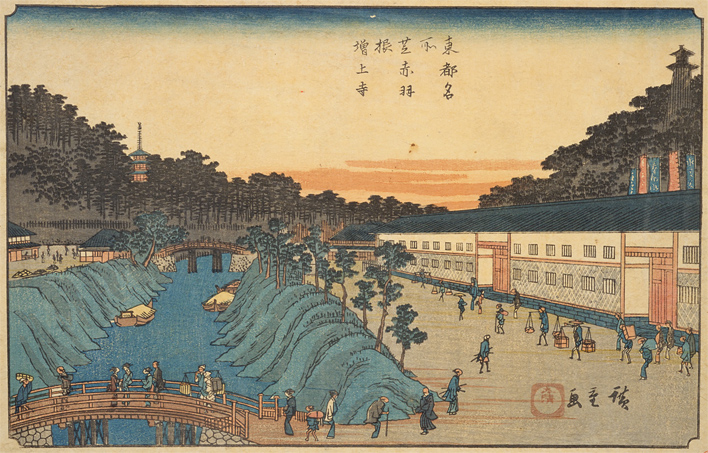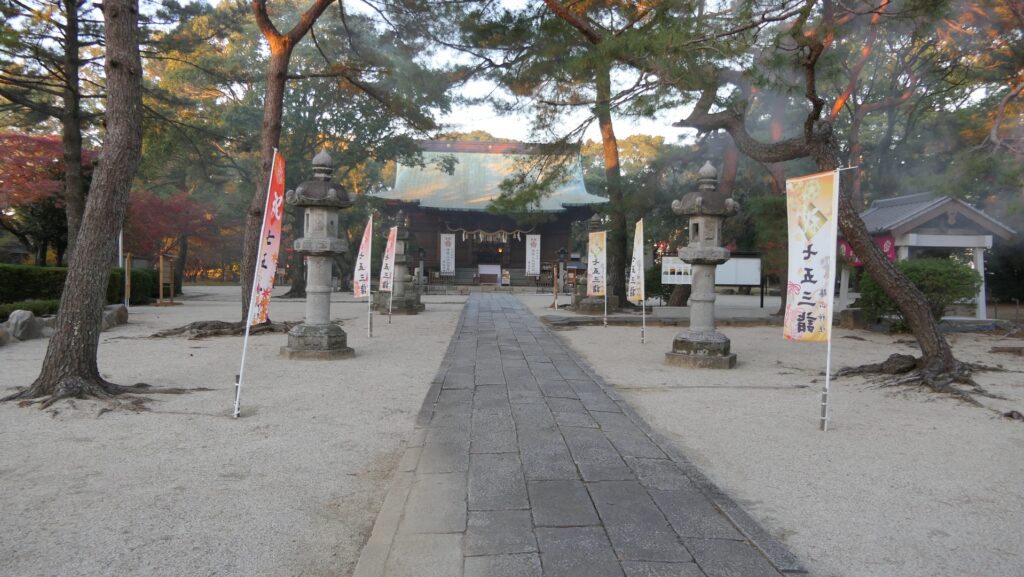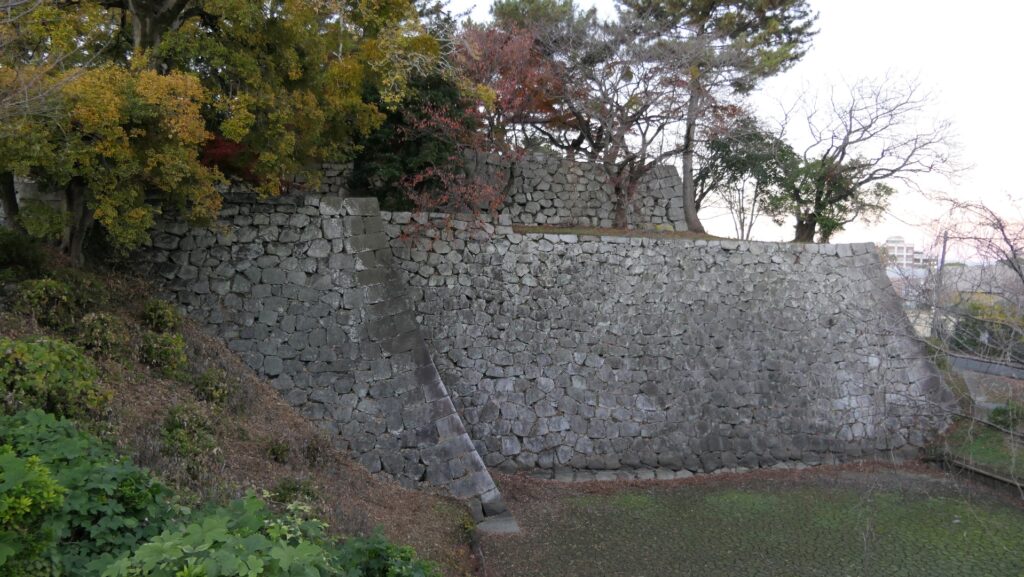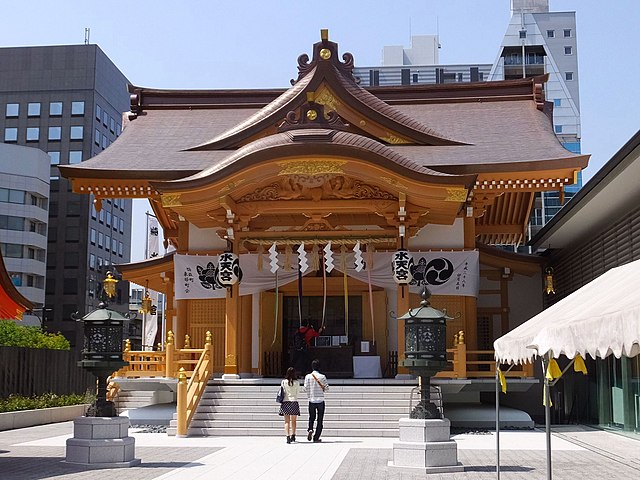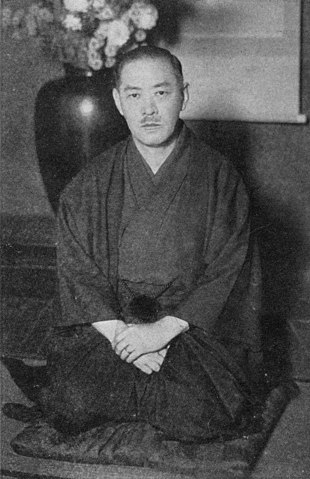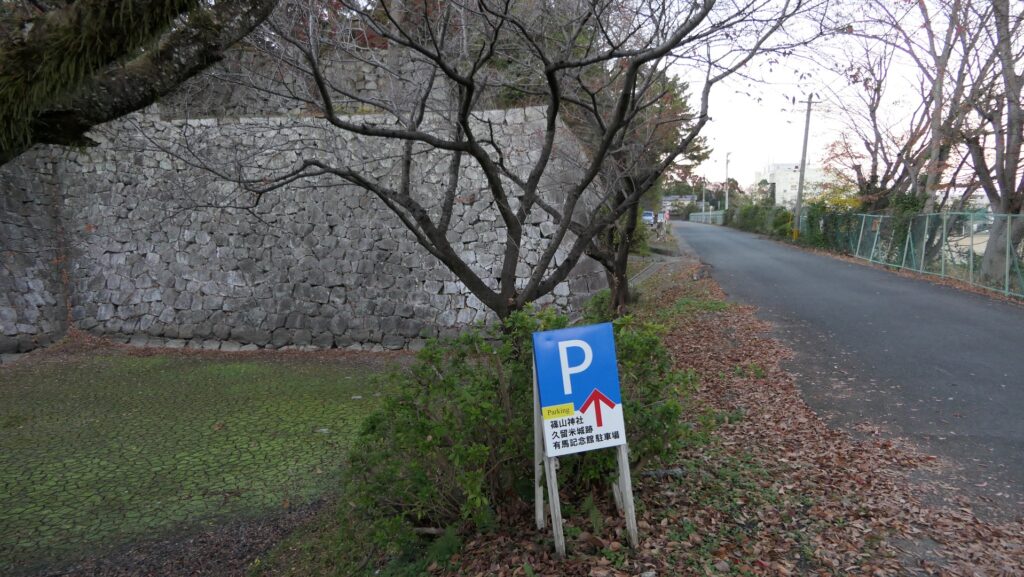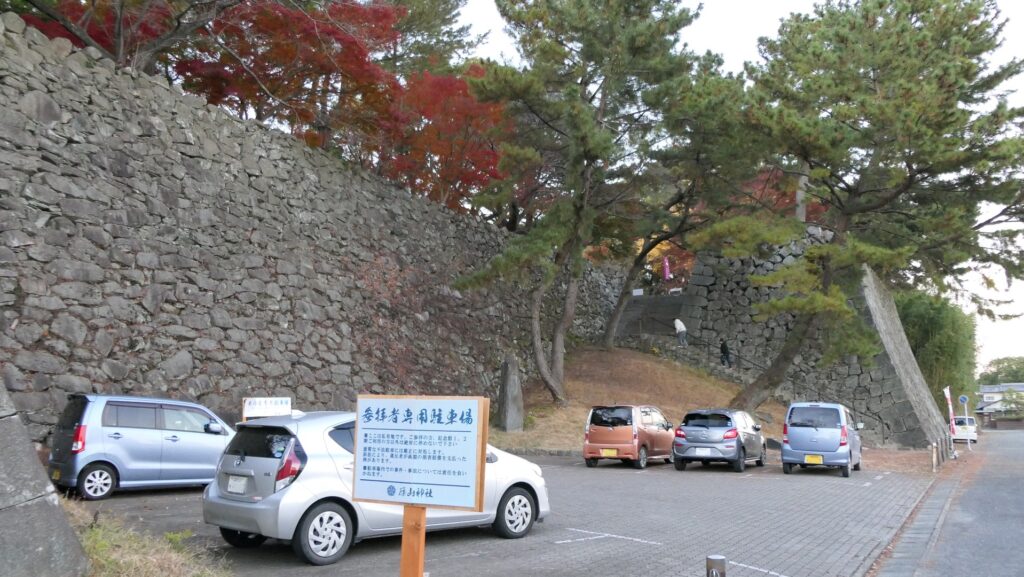Location and History
First Yatsushiro Castle is targeted by several Lords
Yatsushiso City in Kumamoto Prefecture is known for an agricultural and industrial area in the western part of Kyushu Region. These industries have been developed on the reclaimed land since the Edo Period. People in Yatsushiro tripled the size of Yatsushiro Plain by draining water from the Yatsushiro Sea. Before the land reclamation, Yatsushiro prospered as a junction for land and water transportation. Yatsushiro Castle was originally located near the sea, which could control the transportation.
The range of Yatsushiro City and the location of the castleIn fact, there were three Yatsushiro Castles in history, which were originally named Furufumoto, Mugishima, and Matsue Castles. They also didn’t exist at the same time, so people called the most representative castle in the area, Yatsushiro Castle. If you look into the histories of the three castles, you will see that many of Yatsushiro City. Furufumoto Castle, as the first Yatsushiro Castle, was a typical mountain castle which was located on a hilly area between the 14th and 16th centuries. A local lord, the Nawa Clan governed the castle, while the Sagara Clan, which lived in Hitoyoshi Castle inland, wanted to invade Yatsusiro which is located in a good area. The Sagara Clan attacked Furufumoto Castle several times, and managed to finally capture it in 1504. However, during the process of the unification of Japan in the late 16th Century, the castle was followed by the Shimazu Clan and Hideyoshi Toyotomi in 1587.
The relief map around the castle
Second Yatsushiro Castle becomes important place for Water Transportation
Hideyoshi sent his retainer, Yukinaga Konishi as the lord of southern Higo Proveince (Higo is almost the same as Kumamoto Pref.). He abandoned Furufumoto Castle and built Mugishima Castle instead, as the second Yatsushiro Castle. The castle was built at the estuary of Kumagawa River, facing the Yatsushiro Sea, to be used for water transportation. One of the reasons for its location was the preparation for the invasion of Korea that Hideyoshi had planned. Yukinaga actually became a vanguard of the invasion in 1592. In addition to its location, the castle was all made using stone walls. This castle was said to be the prototype of the last Yatsushiro Castle that we can see now. After the Battle of Sekigahara in 1600 where Yukinaga lost, Higo Province was followed by the Kato Clan. Their home base was Kumamoto Castle, while Mugishima Castle was owned by their senior vassal, Masakata Kato as a branch castle.
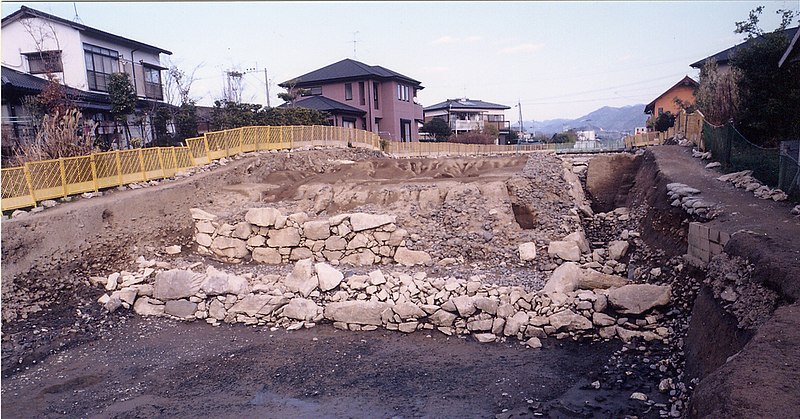
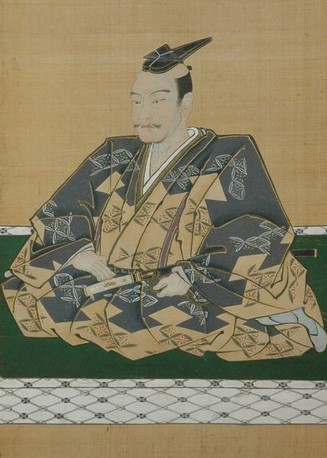
In 1615, the Tokugawa Shogunate issued the Law of One Castle per Province. All the branch castles in Higo Province were destroyed except for Mugishima Castle which was spared for some reasons. The reason for this exemption has been discussed a lot, but not finalized. One theory says that the lord of the clan, Tadahiro Kato was still very young, so the shogunate thought he would be supported by the senior vassal with Mugishima Castle as a guardian. The castle unfortunately collapsed in 1619 due to an earthquake. However, the castle was allowed to be rebuilt to another place as the next exemption. Or, it was said to be officially just move to another location. Anyway, Masakata was practically able to build a new castle nearby, once called Matsue Castle, now called (the third) Yatsushiro Castle.

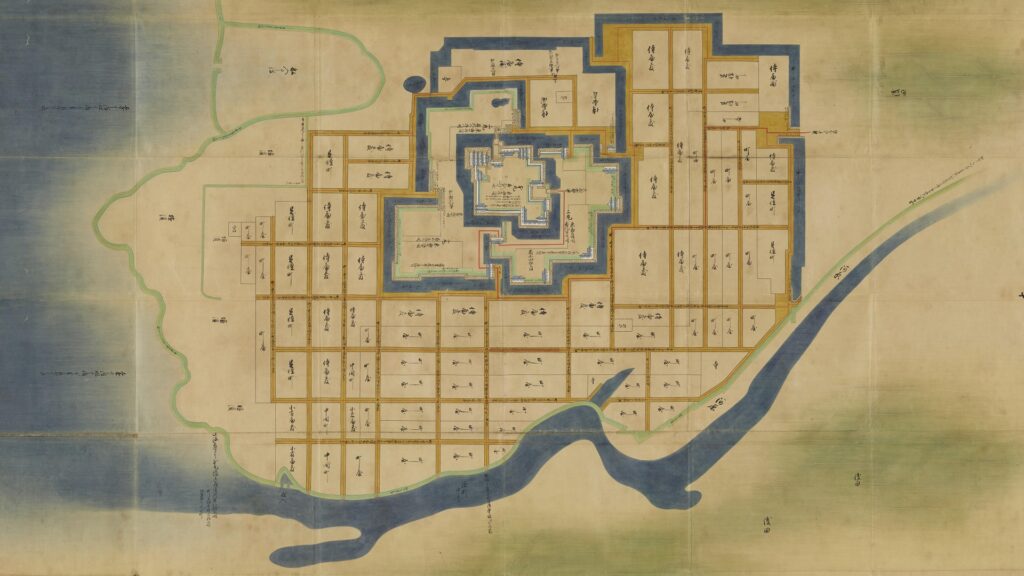
Third Yatsushiro Castle is built and survives as Exemption
The new castle was built partially using Mugishima Castle’s design and materials. For example, the four-level Main Tower was build at the corner of the Main Enclosure, which is an old style of castles built in Toyotomi’s period. On the other hand, the castle used an advanced defensive system called Masugata. Masgata refers to a square shaped space which is surrounded by stone walls at a castle’s entrance. The Masugata system of the castle was set slightly overhanging from the outer line of the Main Entrance, which could counterattack the enemies’ sides. This could be considered as the final version of the system. The castle was eventually completed in 1622.
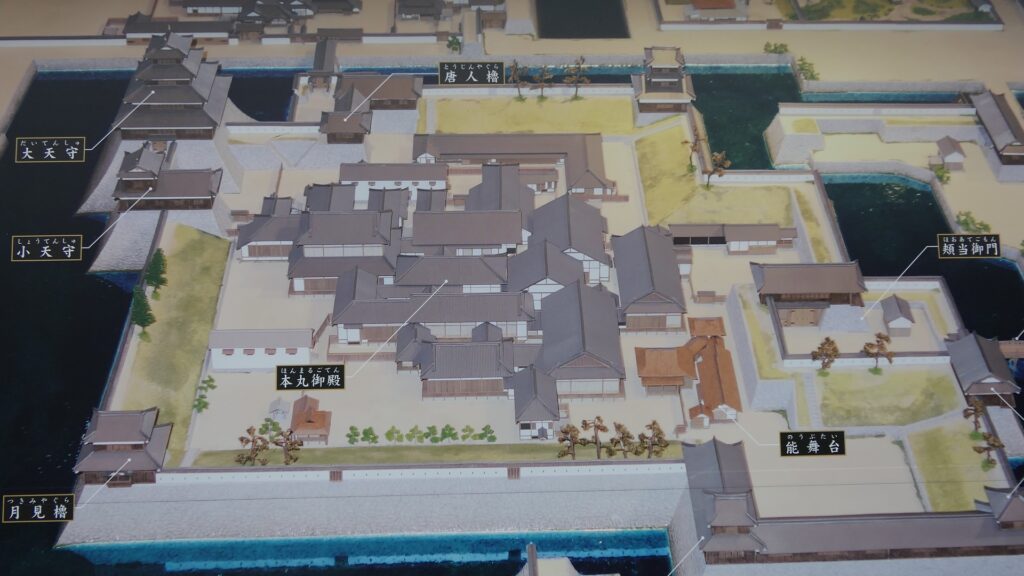


The Kato Clan was unfortunately fired by the shogunate in 1632 before the Hosokawa Clan followed Higo Province. The clan still used Kumamoto Castle as their home base, then Yatsushiro Castle was used as the retreat for the lord’s father, Sansai Hosokawa. He was a survivor of the Sengoku Period and had a self-willed character. That seemed to be another reason that the shogunate couldn’t force to abandon the castle. Sansai even planned to be an independent lord with the castle before his death. As a result, the castle managed to survive all through the Edo Period. The castle was finally owned by the Matsui Clan, a senior vassal of the Kumamoto Domain by the Hosokawa Clan.
